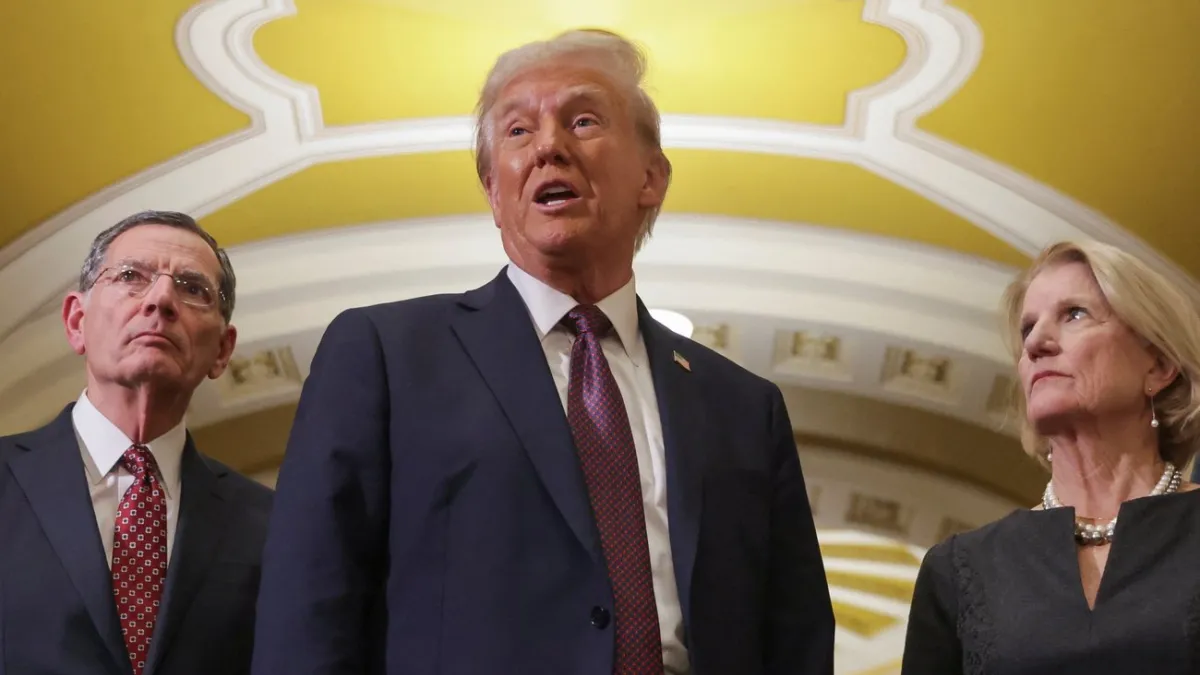
The U.S. is on track to add $22 trillion to the national debt over the next 10 years, the Congressional Budget reported Friday in its updated budget and economic outlook.
A continuous chain of trillion-dollar-plus annual budget deficits, along with trillions more in interest rate expenses, will push government debt to record levels in just four years when measured relative to the size of the economy. Total debt held by the public — a calculation of the national debt that ignores funds the government owes to itself — will equal 107% of the economy by 2029, surpassing the 106% level seen just after World War II. And the outlook may be worse, since the CBO did not factor in an extension of the 2017 Trump cuts, which Republicans are expected to attempt to pass this year, potentially adding $4.6 trillion more in revenue losses relative to the CBO baseline over the next decade.
By 2035, the debt will top $52 trillion, equal to about 118% of gross domestic product. At the end of the most recent fiscal year, the debt stood at $28.2 trillion, or 98% of GDP.
Outlays will continue to rise, rising from 23.3% of GDP in 2025 to 24.0% of GDP by 2035, driven largely by mandatory programs like Social Security and Medicare. Interest costs will rise, as well, exceeding defense spending every year. Meanwhile, discretionary spending — which includes defense and much else of what the government does — will shrink relative to the size of the economy, even as the topline increases.
Revenues will grow, as well, even as they fail to match spending. CBO projects that revenues, projected to be 17.1% of GDP in 2025, will rise to 18.3% of GDP by 2035 — though that also assumes that the 2017 tax cuts expire at the end of this year.
The updated figures released Friday represent a slight improvement over the last set of projections, with a bit more revenue added to the 10-year forecast, but they do little to alter the basic trajectory. “It doesn’t change the policy picture,” CBO Director Phillip Swagel said at a press conference Friday. “The fiscal situation is daunting, the debt trajectory is unsustainable. It’s just the economy is a bit bigger than we thought it was last June, and therefore there’s more revenue.”
Economic outlook: CBO projects positive growth for the economy in the coming years, but at a slower pace. Dropping from the 2.4% rate recorded in 2024, GDP growth is projected to hit 1.9% this year and 1.8% in 2026, then maintain that rate through 2035. About 80% of the growth is expected to come from improved labor productivity, with the rest driven by the increasing size of the labor force.
There’s good news on inflation. CBO expects the inflation rate to fall to 2.2% this year, dropping to the Federal Reserve’s target rate of 2% by 2027, where it remains for the foreseeable future.
Interest rates are headed lower, too, CBO predicts. The 10-year Treasury rate is projected to fall to 4.0% in 2025, with the Fed funds rate dropping to 3.7%. Rates move moderately lower after that, ending 2034 at 3.8% and 3.2% respectively.
Big battles over taxing and spending ahead: The latest CBO estimates arrive as Republicans dive into a debate over their fiscal plans, which focus heavily on tax cuts but also potential spending reductions, which could be significant. One problem is that tax cuts are generally easier to agree upon than spending cuts — a major reason the deficit is so large and the debt continues to grow.
Kentucky Republican Rep. Andy Barr warned his colleagues this week that “the bond vigilantes are coming,” referring to Wall Street investors who are preparing to punish excessive government borrowing by driving interest rates higher. Whether those vigilantes exist is an open question, but there is no doubt that interest rates have risen, raising the cost of maintaining the national debt. Barr, a member of the Republican Study Committee who sits on the Financial Services Committee, said the rise in rates is a “tipping point,” one that puts lawmakers on notice that they must present a viable plan for deficit reduction or pay a heavy price in the international markets.
Republicans appear to be serious about lining up major spending cuts, though it remains to be seen if they can enact them. Punchbowl News reported Friday that Republicans in the House are circulating a 51-page list of dozens of potential reforms and spending cuts, which touch on everything from healthcare and green energy subsidies to the tax treatment of corporate perks and scholarships.